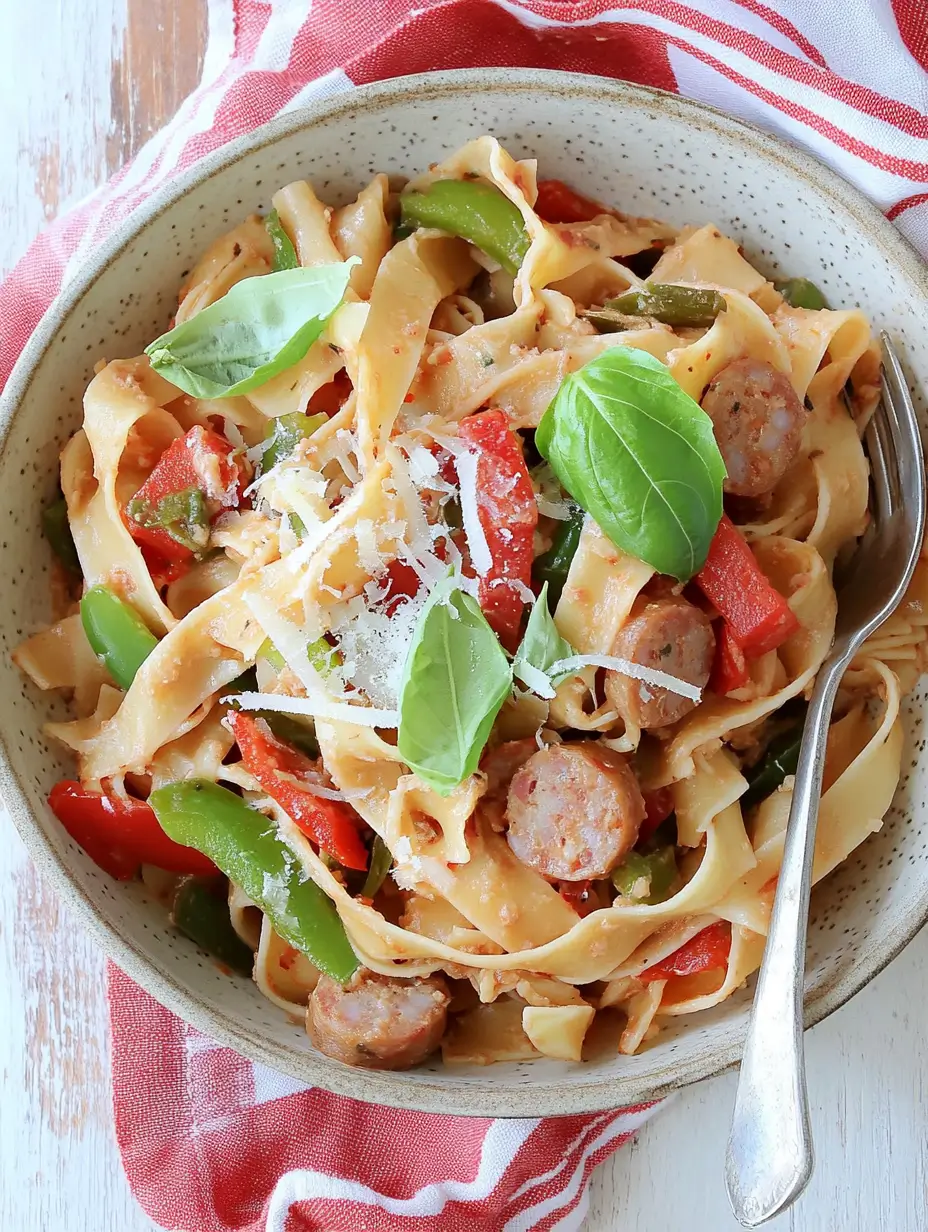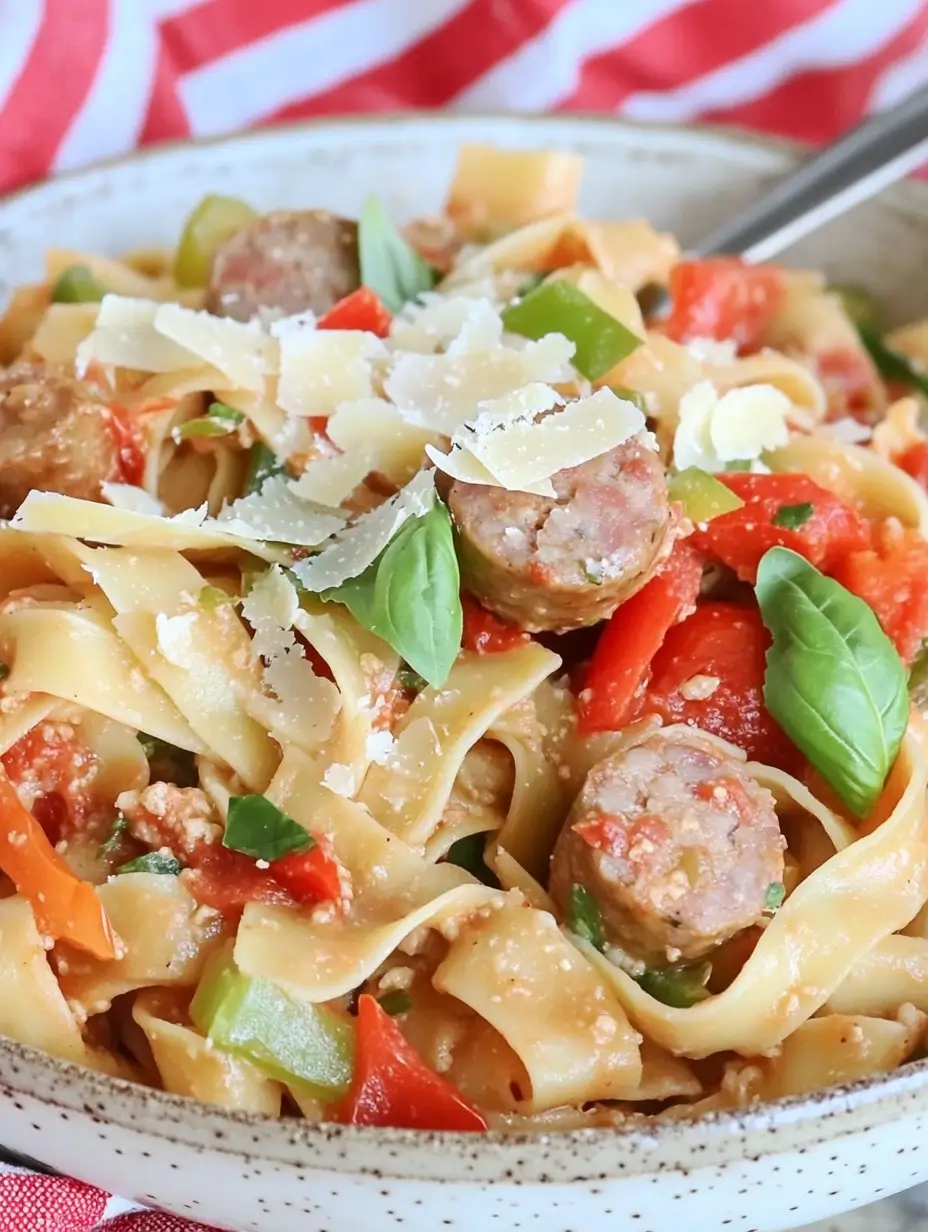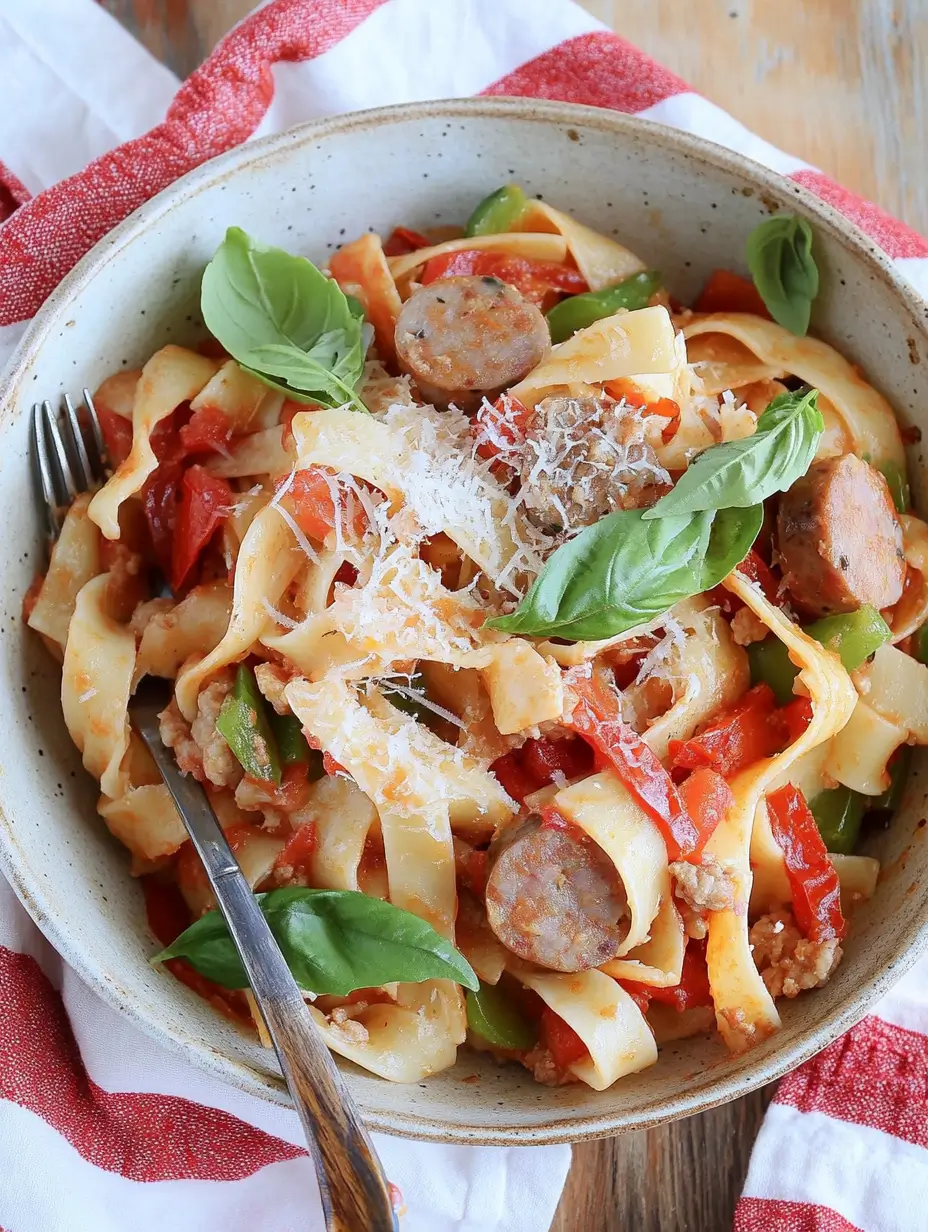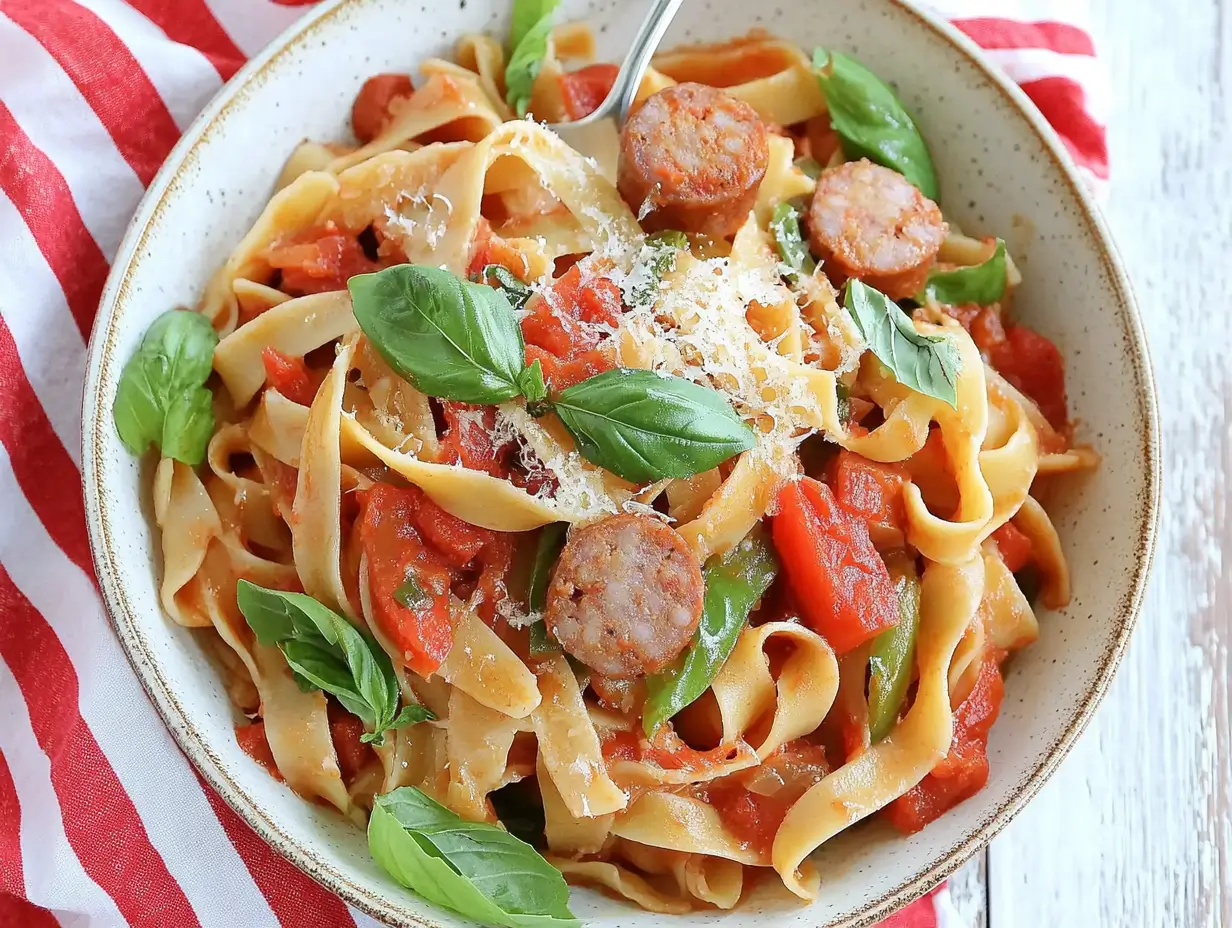Italian Drunken Noodles combines hearty Italian flavors with a playful twist, creating a dish that’s both satisfying and intriguing. Have you ever wondered why it’s called Italian Drunken Noodles? Does the name stem from the wine in the recipe, or does it connect to Thailand’s famous Drunken Noodles? This article uncovers the dish’s origins, key ingredients, cooking methods, and cultural influences. By the end, you’ll understand this delightful recipe and might even want to try it!
The Origins of Italian Drunken Noodles
What Are Italian Drunken Noodles?
This dish brings together wide pasta ribbons like pappardelle or tagliatelle, Italian sausage, fresh vegetables, and red wine. The result is a bold, flavorful recipe that feels both rustic and sophisticated. While inspired by Thai Drunken Noodles, this version highlights the essence of Italian cuisine with Mediterranean herbs and hearty textures.

How Did the Dish Get Its Name?
The term drunken noodles might suggest a boozy recipe, but it’s not quite as literal as you think. Italian Drunken Noodles gets its name primarily because wine is a prominent ingredient in the sauce. However, its connection to the Thai dish can’t be ignored either. In Thai culture, drunken noodles were a late-night street food favorite for those needing a flavorful fix after a few drinks. The Italian adaptation plays on this fun and carefree reputation, blending it with wine-infused sophistication.
A Cross-Cultural Nod: The name may also be a playful homage to its Thai predecessor, showcasing how culinary creativity spans across continents.
The Wine Factor: Unlike Thai drunken noodles, which don’t contain alcohol, Italian Drunken Noodles often feature red wine as a central ingredient. It’s this inclusion that gives the dish its “drunken” moniker.
Key Ingredients in Italian Drunken Noodles
Core Ingredients That Define the Dish
Every ingredient plays a crucial role in creating the dish’s signature flavors. Wide, flat pasta absorbs the hearty sauce, while Italian sausage adds a savory and slightly spicy kick. Vegetables like bell peppers, onions, and zucchini bring a fresh crunch and vibrant colors. Fragrant herbs like oregano, parsley, and basil complete the Mediterranean flavor profile.
The Italian Twist: Wine and Herbs
The use of red wine sets this recipe apart. It enhances the sauce, adding a tangy, robust flavor that defines the dish. Tomatoes, often crushed or diced, create the base of the sauce, while garlic and onions add depth. A sprinkle of chili flakes or cracked black pepper balances the sweetness of the wine with a subtle heat.
Italian vs. Thai Drunken Noodles: A Comparative View
While they have a common name and a reputation for being spicy dishes, they are two completely different worlds in terms of taste and preparation. Thai Drunken Noodles, or Pad Kee Mao, uses rice noodles, fish sauce, and fiery Thai basil for a spicy, aromatic experience. In contrast, Italian Drunken Noodles leans on the heartiness of Italian pasta, the richness of a tomato-wine sauce, and classic Mediterranean herbs like oregano and parsley.
This fusion dish is a testament to how culinary traditions evolve, borrowing the best elements from different cultures. Up next, we’ll dig into the key ingredients that make Italian Drunken Noodles a star on the dinner table!
How to Make Italian Drunken Noodles
Steps to Prepare the Dish
Follow these simple steps to create a perfect bowl of Italian Drunken Noodles:
- Cook the Pasta: Boil the pasta in salted water until al dente. This ensures the noodles remain firm when mixed with the sauce.
- Brown the Sausage: Crumble and cook the Italian sausage in a skillet until golden and fragrant. Set it aside.
- Sauté Vegetables: In the same skillet, sauté onions, bell peppers, and zucchini until they are tender but still vibrant.
- Deglaze the Pan: Add a splash of red wine to the skillet, scraping up any flavorful bits stuck to the bottom.
- Simmer the Sauce: Stir in tomatoes, garlic, and herbs, allowing the mixture to simmer until slightly thickened.
- Combine Everything: Return the sausage to the skillet, toss in the cooked pasta, and stir until everything is evenly coated.

How the Cooking Technique lifts the Dish’s Flavor
Making Italian Drunken Noodles is all about layering flavors at every single step. Searing sausage and vegetables builds the meaty base. Deglazing the pan with wine gives the final dish its rich signature depth. Then simmering the sauce concentrates the delicious juices pouring from either tomato or wine into a well-rounded profile of flavor notes that include savory, sweet, and tangy-all beautifully blended together.
Every step from boiling the pasta to tossing it in the sauce was designed to add a little bit of magic to the dish. It is this painstaking attention that sets Italian Drunken Noodles apart as a recipe as well as attracts food lovers due to this curious appellation.
Why the “Drunken” Connection?
Role of Wine in Italian Cuisine
Wine holds a special place in Italian cooking, not just as a drink but as an essential ingredient in many dishes. Besides the sauce flavoring, Italian Drunken Noodles red wine is part of the playful name: just why is it called Italian drunken noodles? Because the inclusion of wine gives the dish that depth, such that it could tout a rich, spicy origin to add to the ordinary tomato-based recipe.
Historically, Italians have used wine in their recipes for centuries. From braising meats to deglazing pans, wine contributes a complexity that water or broth simply can’t replicate. In this dish, the red wine binds the flavors of the sausage, tomatoes, and vegetables, creating a bold and harmonious taste.
Regional Variations and Popularity
How the Dish Evolved in Different Regions
Italian Drunken Noodles has evolved as it traveled, adapting to local tastes and ingredients. In the U.S., cooks often replace red wine with white or omit it entirely for a family-friendly version. Some variations swap Italian sausage for chicken or shrimp, while vegetarian adaptations feature eggplant or spinach for a heartier feel. These changes highlight the dish’s versatility while maintaining its core identity as a hearty and flavorful meal.
Why Italian Drunken Noodles Has Gained Global Popularity
So, why is it called Italian drunken noodles in the first place and why has it attracted such a mass following? It’s part of the entryway into the intrigue: the name itself is initially interesting to the ear or eye. But beyond that, this is a ridiculously easy dish for which few ingredients are available and provides the flavour of restaurant-style cooking at home.
The flavor of this dish has furthermore been popularized by the evolution of increasing food blogs and sites for posting and exchanging recipes. Recipes like What Makes Drunken Noodles Drunk break down the playful aspects of the dish, making it more appealing to adventurous cooks.
For those curious about other creative noodle dishes, you might also enjoy exploring “What is Drunken Noodles Sauce Made Of?” on our website.

FAQs
Is There Alcohol in Italian Drunken Noodles?
Can It Be Made Alcohol-Free?
What Variations Can Be Tried?
Conclusion
Italian Drunken Noodles isn’t just a dish—it’s a story of cultural fusion and culinary creativity. Its combination of hearty pasta, savory sausage, fresh vegetables, and wine-infused sauce offers a satisfying meal that bridges continents and traditions. Whether you stick to the original recipe or add your own twist, this dish is sure to become a favorite at your table.
For more about creating this dish at home, including step-by-step instructions, check out Italian Drunken Noodles Recipe. Enjoy a plate of this flavorful pasta and share the joy that inspired its name!

